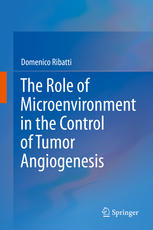

Most ebook files are in PDF format, so you can easily read them using various software such as Foxit Reader or directly on the Google Chrome browser.
Some ebook files are released by publishers in other formats such as .awz, .mobi, .epub, .fb2, etc. You may need to install specific software to read these formats on mobile/PC, such as Calibre.
Please read the tutorial at this link: https://ebookbell.com/faq
We offer FREE conversion to the popular formats you request; however, this may take some time. Therefore, right after payment, please email us, and we will try to provide the service as quickly as possible.
For some exceptional file formats or broken links (if any), please refrain from opening any disputes. Instead, email us first, and we will try to assist within a maximum of 6 hours.
EbookBell Team

0.0
0 reviewsThis work describes the importance of tumor microenvironment in favouring tumor progression and angiogenesis.
Under physiological conditions, angiogenesis is dependent on the balance of positive and negative angiogenic modulators within the vascular microenvironment and requires the functional activities of a number of molecules, including angiogenic factors, extracellular matrix proteins, adhesion molecules and proteolytic enzymes.
In normal tissues, vascular quiescence is maintained by the dominant influence of endogenous angiogenesis inhibitors over angiogenic stimuli.
Tumor angiogenesis is linked to a switch in the balance between positive and negative regulators, and mainly depends on the release by inflammatory or neoplastic cells of specific growth factors for endothelial cells, that stimulate the growth of the blood vessels of the host or the down-regulation of natural angiogenesis inhibitors.
In particular, the inflammatory infiltrate may contribute to tumor angiogenesis, and there are many reports of associations between tumor inflammatory infiltrate, vascularity and prognosis.
New therapeutic approaches have been developed with the aim to control tumor angiogenesis through targeting of different components of tumor microenvironment.